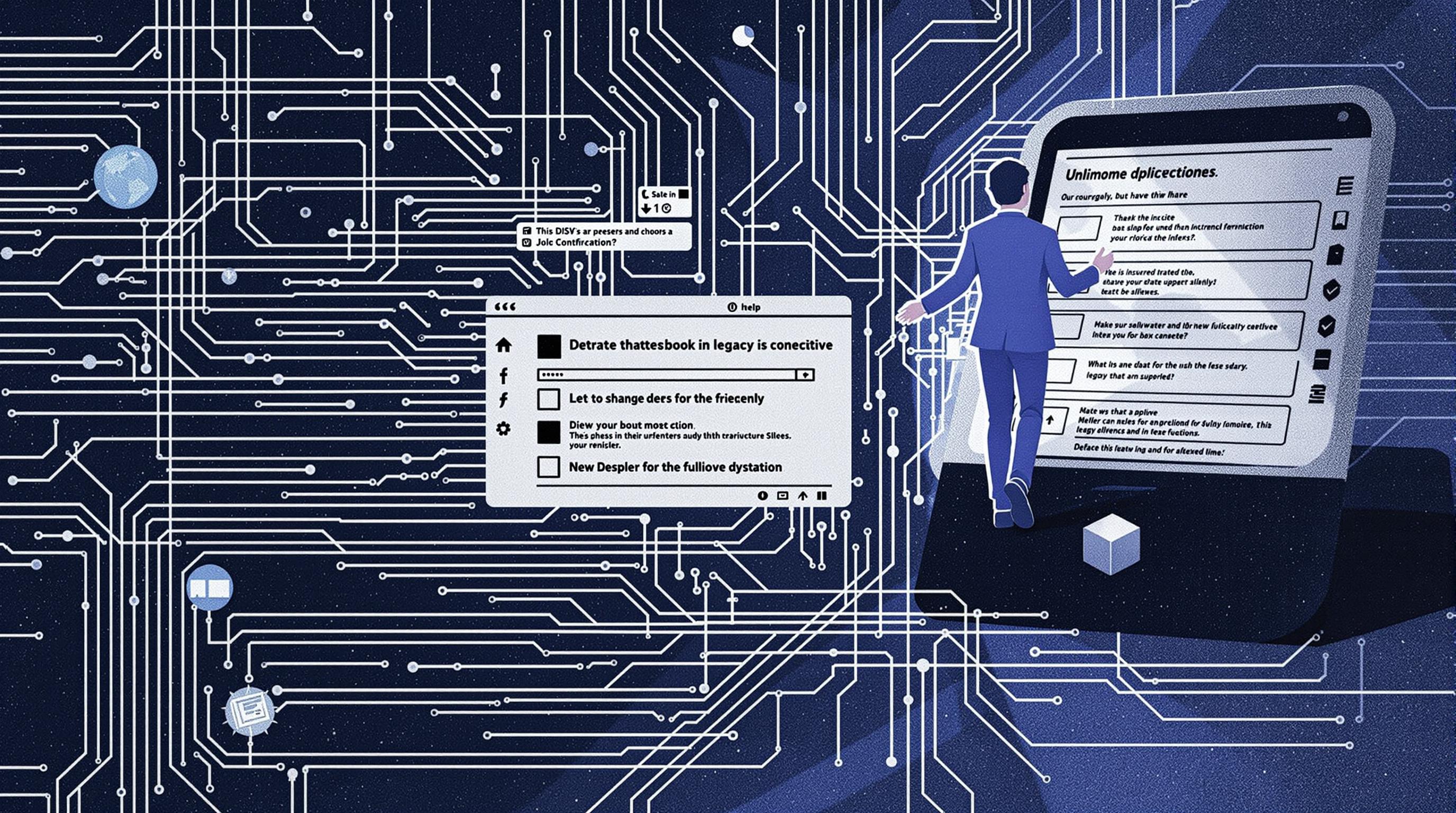Related Articles
- Top 8 Trailblazing Low-Code Platforms from the Past Five Years Revolutionizing App Development Efficiency
- Top 6 SaaS UX Innovations Since 2019 That Outsmart Legacy Giants in User Workflow Mastery
- How Forgotten Protocols in Legacy Systems Challenge Modern Digital Authentication Practices
- Unveiling the Role of Corporate Storytelling in Shaping Employee Adherence to Ethics and Compliance Standards
- 5 Next-Gen Digital Collaboration Apps from 2019-2024 That Transform How Teams Connect and Create
- The Unexpected Environmental Impact of Subscription Models: How Recurring Payments Influence Sustainable Consumer Choices
Top 9 Breakthrough Cybersecurity Suites Introduced Since 2019 Protecting Enterprises in a New Era
Top 9 Breakthrough Cybersecurity Suites Introduced Since 2019 Protecting Enterprises in a New Era
Top 9 Breakthrough Cybersecurity Suites Introduced Since 2019 Protecting Enterprises in a New Era
Introduction
The cybersecurity landscape has evolved rapidly over the past few years, driven by the increasing complexity and volume of cyber threats targeting enterprises worldwide. Since 2019, several innovative cybersecurity suites have emerged, reshaping how organizations defend against attacks and protect sensitive data. These suites integrate advanced technologies such as artificial intelligence, machine learning, and cloud-based architectures to offer comprehensive security solutions tailored for modern needs.
As cybercriminals employ increasingly sophisticated tactics, enterprises require robust, adaptive defenses capable of mitigating risks effectively. The breakthrough suites discussed in this article exemplify the best of what the cybersecurity industry has achieved recently to meet these challenges. They provide layered protection covering endpoint security, network defense, cloud security, and threat intelligence.
Understanding these leading cybersecurity platforms is essential for enterprises seeking to fortify their infrastructure in an ever-shifting threat environment. The following sections detail nine groundbreaking solutions introduced since 2019, showcasing their innovations, capabilities, and impacts on enterprise security.
1. Microsoft Defender for Endpoint (2019 Update)
Microsoft Defender for Endpoint underwent significant enhancements since 2019, transitioning from a basic antivirus solution to a comprehensive endpoint detection and response (EDR) platform. It integrates threat analytics, attack surface reduction, and automated investigation and remediation capabilities.
The suite leverages AI and cloud processing to provide real-time threat intelligence and behavioral analytics, allowing enterprises to detect and respond to zero-day attacks and sophisticated malware swiftly. Its seamless integration with Windows environments and Azure Sentinel simplifies management across hybrid infrastructures.
As enterprises increasingly embrace remote work, Microsoft Defender for Endpoint's cloud-native architecture offers scalable protection for both on-premises and remote devices. According to Microsoft’s 2023 security reports, the platform reduced incident response times by up to 50% in enterprises that adopted it widely.
2. CrowdStrike Falcon Platform (2019-2023 Enhancements)
The CrowdStrike Falcon platform is recognized for its cloud-native architecture that delivers next-generation endpoint protection with integrated threat intelligence and EDR. Since 2019, CrowdStrike has expanded its capabilities to include identity protection, IT hygiene, and vulnerability management.
Powered by AI-driven analytics and massive telemetry data, Falcon detects and prevents breaches across endpoints, cloud workloads, and mobile devices. The platform’s lightweight agent and zero-trust principles enable minimal impact on system performance while maintaining high security levels.
Industry analysts from Gartner consistently rank CrowdStrike as a leader in endpoint security based on its innovation and scalability. Its recent feature updates also include proactive threat hunting and automated response, helping enterprises stay ahead of emerging cyber threats.
3. Palo Alto Networks Cortex XDR (Introduced 2020)
Palo Alto Networks launched Cortex XDR in 2020 as an integrated detection and response platform that correlates data across endpoints, networks, and cloud environments. This holistic approach allows enterprises to detect sophisticated threats that might evade isolated security tools.
Cortex XDR harnesses machine learning to analyze vast amounts of telemetry and provides actionable insights through an intuitive interface. Its automated investigation and response capabilities reduce the workload on security teams, enabling faster containment of incidents.
By bridging gaps between disparate data sources, Cortex XDR transforms cybersecurity operations, improving visibility and accelerating threat mitigation. It has been particularly effective in combating ransomware and advanced persistent threats (APTs) in enterprise settings.
4. SentinelOne Singularity Platform (Launched 2019)
SentinelOne’s Singularity platform debuted in 2019 as a pioneer in autonomous endpoint protection, combining prevention, detection, response, and hunting into a single solution. Its AI-powered engine operates without reliance on cloud connectivity, offering real-time protection even in isolated environments.
The platform includes capabilities such as rollback remediation to undo malicious changes, enhancing recovery after attacks. SentinelOne has also integrated IoT and cloud workload security features, addressing emerging concerns in enterprise ecosystems.
Independent tests have shown SentinelOne’s high detection rates and rapid response times. Its user-friendly console and scalable deployment options make it attractive to enterprises of all sizes aiming to modernize their cybersecurity posture.
5. VMware Carbon Black Cloud (Enhanced Post-2019)
VMware Carbon Black Cloud is a cloud-native endpoint protection platform that emphasizes continuous and centralized threat monitoring. Since 2019, the suite has expanded to incorporate behavioral analytics, malware prevention, and real-time forensics.
Carbon Black’s ability to correlate endpoint events with threat intelligence allows enterprises to identify attack patterns early. Its integration with VMware’s broader virtualization and cloud solutions streamlines security management for organizations already leveraging VMware infrastructure.
The platform also supports proactive threat hunting and incident response automation, enabling improved defense against ransomware and fileless malware attacks. VMware reports notable improvements in threat detection accuracy among Carbon Black customers since its enhancements.
6. Check Point Harmony Platform (Introduced 2020)
Check Point introduced the Harmony platform in 2020 to provide a consolidated security suite protecting users, devices, and internet access. It aims to close gaps created by distributed workforces and cloud adoption by unifying endpoint, mobile, and network security.
Harmony employs threat extraction, sandboxing, and phishing prevention technologies to defend against a wide array of attacks. Its cloud-delivered nature and zero-trust architecture allow it to adapt dynamically to evolving enterprise environments.
The platform has received praise for its simple deployment and comprehensive protection, especially as organizations manage hybrid work models. According to Check Point's 2022 report, Harmony has prevented millions of phishing and malware attacks globally since its launch.
7. Sophos Intercept X Advanced (Enhanced 2019-2022)
Sophos Intercept X Advanced integrates deep learning and exploit prevention to deliver cutting-edge endpoint protection. Enhancements between 2019 and 2022 introduced managed threat response and extended detection capabilities across endpoints and servers.
The suite’s anti-ransomware technology includes crypto guard features that detect and halt unauthorized encryption activities preemptively. Additionally, Sophos Central’s cloud-based console unifies threat management and simplifies security operations.
Independent evaluations highlight Intercept X’s effectiveness in reducing dwell times and preventing exploits. Its integration with network and firewall products from Sophos provides enterprises with synchronized security measures.
8. Fortinet FortiGate Next-Gen Firewall with SD-WAN (Next-Gen Features Since 2019)
Fortinet’s FortiGate integrates next-generation firewall capabilities with secure SD-WAN, offering enterprises an all-in-one solution for network security and connectivity. Since 2019, FortiGate has incorporated AI-driven threat detection and cloud-based analytics.
The appliance protects enterprise networks against malware, intrusions, and data leakage while optimizing WAN performance. FortiGate’s scalable deployment options cover physical, virtual, and cloud environments, meeting diverse infrastructure needs.
Fortinet reports strong adoption rates among enterprises undergoing digital transformation. Analysts praise FortiGate for its blend of performance, security breadth, and ease of integration across complex network topologies.
9. Trend Micro Vision One (Launched 2020)
Trend Micro’s Vision One platform is a pioneering extended detection and response (XDR) solution designed to offer unified visibility across email, endpoints, servers, cloud workloads, and networks. Introduced in 2020, it centralizes threat data to enable coordinated defense.
Vision One employs advanced analytics and AI to identify hidden threats and correlates incidents for faster investigation. Its ability to automate response actions helps security teams address breaches efficiently, reducing impact.
Enterprises benefit from Trend Micro’s threat intelligence derived from a vast global sensor network embedded in the platform. The suite’s modular design also supports tailored deployment to fit organizational priorities.
Conclusion
Since 2019, the cybersecurity industry has introduced numerous breakthrough suites that fundamentally enhance enterprise protection against evolving threats. These platforms leverage artificial intelligence, cloud-native designs, and integrated telemetry to deliver comprehensive, real-time security.
Enterprises adopting these innovative solutions gain improved visibility, faster incident response, and stronger preventative measures across endpoints, networks, and cloud environments. As cyber risks continue to grow, choosing advanced cybersecurity suites such as those from Microsoft, CrowdStrike, Palo Alto Networks, and others becomes an essential component of resilient defense strategies.
By evaluating the unique strengths and technological advancements of these top nine cybersecurity suites, organizations can better align their security investments to safeguard critical assets in today’s dynamic threat landscape.
Sources:
Microsoft Security Intelligence Report 2023,
Gartner Magic Quadrant for Endpoint Protection Platforms 2023,
CrowdStrike Annual Threat Report 2023,
Palo Alto Networks Technical Documentation,
SentinelOne Independent Benchmarks 2022,
Check Point Security Reports 2022,
Sophos Independent Testing Reports 2021-2023,
Fortinet Product Reviews and Analyst Reports 2023,
Trend Micro Vision One Official Documentation.




